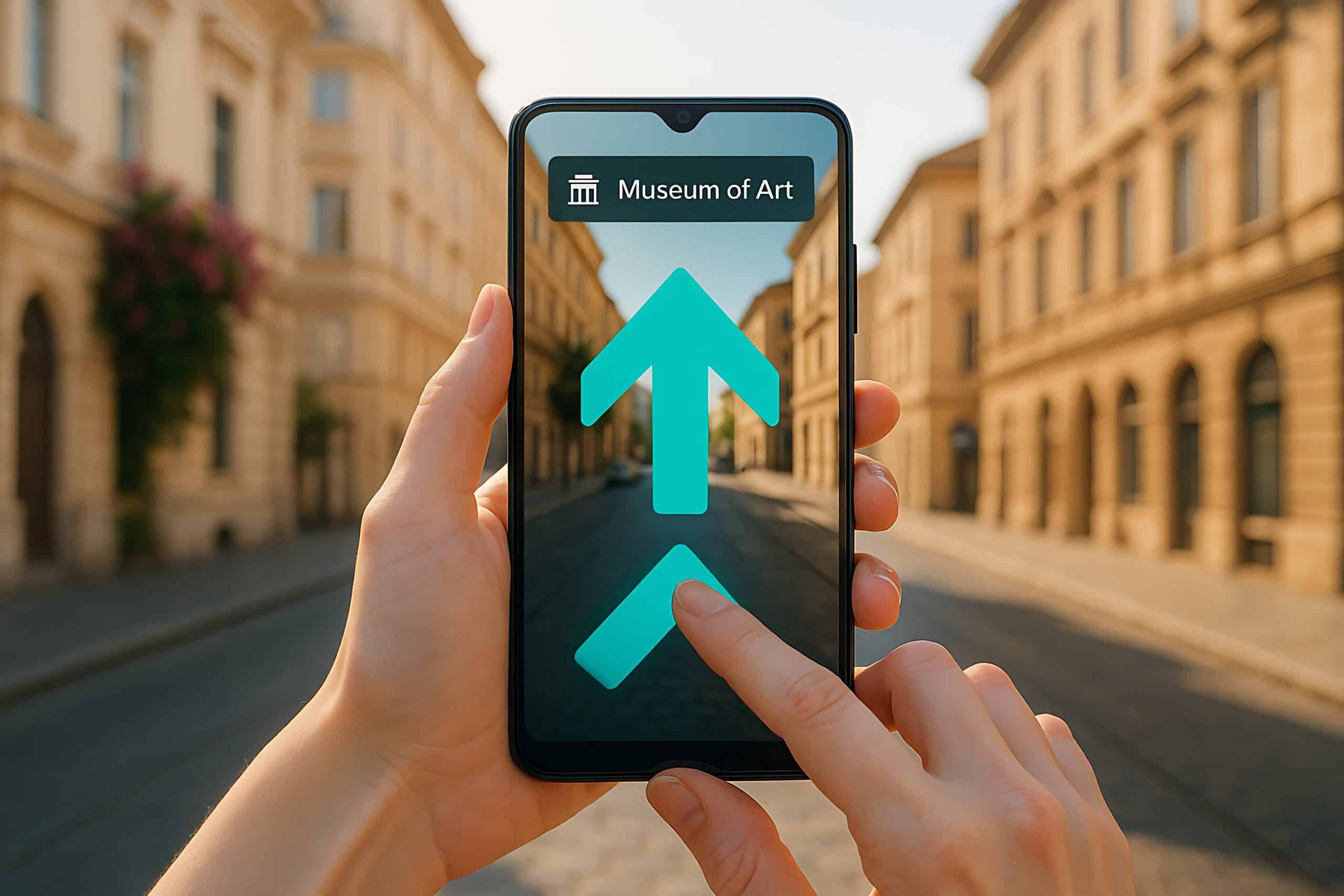Airlines spend a lot of time thinking about the main cabin experience. But there’s a longer runway to focus on: the days, weeks, or even months between booking and boarding. Today’s travelers aren’t just waiting for departure; they’re actively searching, planning, and dreaming. In that window, you have their attention. The question is, how will you use the lead-up post-booking?
From personalized cross-sells to in-app perks, there are countless ways to keep travelers connected, excited, and spending well before wheels up. Post-booking travel engagement is the key to unlocking new revenue and reinforcing loyalty before takeoff. Explore the tactics and tools that help turn anticipation into action and transform your travel brand into more than just a boarding pass.
Why the Post-Booking Window Holds Untapped Value
Despite the pre-trip excitement, engagement often drops off as soon as the booking confirmation email hits a traveler’s inbox. But between this and boarding lies a long (and lucrative) stretch of time. This often-overlooked window is a prime opportunity to revamp post-booking travel engagement, reconnect with your customers, and remain top-of-mind as they gear up for their trip.
It’s also the perfect moment to reinforce brand loyalty through your own upsells or curated partner offerings. From hotel discounts and car rental upgrades to lounge access and meal credits, these value-adds help travelers feel supported while scaling non-ticket revenue. And travelers are spending big. In 2025 alone, guest spending across hotels, transportation, restaurants, and retail is projected to reach a record $777.25 billion.
This surge in spending aligns with a sharp rise in ancillary revenue industry-wide. Global airline ancillary revenue is up 275% from just over a decade ago and is expected to hit $117.9 billion by the year’s end. Ancillaries now make up 15% of total airline revenue, with leaders like Delta earning $8 billion and Spirit generating over half its revenue from extras alone. It’s clear: post-booking travel engagement isn’t optional, it’s essential.
These additional purchases, often referred to as ancillary services, include a wide variety of offerings, such as:
- Airline Services: Checked baggage, seat selection (including extra legroom or premium seats), in-flight meals and drinks, priority boarding, lounge access, and trip insurance.
- Hotel Services: Room upgrades, on-site parking, airport transfers, spa treatments, minibar items, early check-in, late check-out, and on-site dining credits.
- Car Rental Services: Additional drivers, GPS navigation, upgraded insurance, fuel purchase credits, and child safety seats.
- Experiences: Tour packages, tickets to local attractions, cultural activities, dining reservations, and guided excursions.
The Revenue Hiding Between Booking and Boarding
Post-booking, traveler priorities shift from logistics to experiences. That’s evidenced by the 12 weeks leading up to a trip, when experience-related searches are three times more common than hotel searches and eight times more frequent than air searches. These travelers aren’t just organizing final details; they’re orchestrating their ideal itinerary. Add to that the extra travel day many are now tacking on compared to 2019, and it’s obvious consumers crave more from destinations.
Nearly 95% of travelers now participate in at least one in-destination activity when visiting an area away from home. This demand for immersive experiences presents a valuable and often underutilized revenue stream. Globally, spending on experiences now makes up 12% of tourism sales, the highest in five years. In Brazil, experience-based spending is up nearly 40% since 2019, while retail is down more than 11%. Smart post-booking travel engagement strategies help brands capitalize on this trend while guiding customers from inspiration to action.
Travelers, in turn, expect one place to manage it all. From flights and hotels to dinner reservations and local excursions, convenience drives conversions. Airlines that act as one-stop travel shops — like Marriott Bonvoy Moments has done for hotels — stand to benefit most. Still, many brands fall short. Static itineraries and generic follow-ups leave a gap where meaningful post-booking travel engagement could (and should) thrive. But with the right tools, that gap becomes an opportunity.

Tactics to Boost Post-Booking Travel Engagement
Creating a seamless, revenue-generating travel journey starts long before boarding. Between AI-powered recommendation engines and mobile trip management tools, modern brands have more ways than ever to drive post-booking travel engagement. Take a look at some of the most effective tactics for keeping travelers connected, inspired, and ready to spend before wheels up.
Personalization That Pays Off
Nearly 80% of travelers purchased air extras on their last trip, spending an average of $62. Even more compelling? Many say they’d spend up to $99 if these ancillary purchases made their journey feel more personalized. That’s proof that personalization isn’t just nice to have, it’s profitable when done right.
Leverage first-party booking data to recommend trip add-ons like hotels, excursions, and car rentals that align with a traveler’s itinerary. Likewise, countdown emails with dynamic offers — like airport lounge access or priority boarding — can tap into urgency and boost post-booking travel engagement with minimal lift.
Smart Cross-Sells, Not Spammy Upsells
The secret to meaningful post-booking travel engagement lies in offering the right add-ons at the right moment. For today’s travelers, timing, relevance, and seamless integration matter more than volume. So, skip the generic promos and lead with enhancements that improve the travel experience, not overwhelm it.
Start with low-hanging fruit like seat upgrades and checked bags. Then, build in curated destination offers. American Airlines, for example, partnered with Ticketmaster to offer presale concert tickets: an experience-first strategy that adds value while driving revenue. It’s proof that well-timed cross-sells can feel like service, not sales.
Mobile-First, Real-Time Touchpoints
Travelers plan, book, and modify trips on the go, and your engagement strategy should follow suit. Mobile apps make it easier to deliver real-time value, from loyalty point reminders to bundled incentives. Think personalized trip tips, weather alerts, or bonus rewards for checking in early or filling out preferences.
Widgets can streamline check-in, gate info, security access, and even in-air entertainment or snack orders. More advanced tools like augmented reality (AR) travel guides add a wow factor, overlaying historical facts and local recs on navigation apps. These mobile-first touchpoints drive relevance, satisfaction, and long-term loyalty.
How to Build Traveler Loyalty That Lasts Beyond the Flight
Though the tactics we’ve explored so far focus on the stretch between booking checkout and airline check-in, post-booking travel engagement doesn’t have to end at the airport. In fact, the journey offers just as many touchpoints after departure and once the traveler returns home. With the right strategy, you can keep the wanderlust alive — and loyalty strong — well beyond landing.
Simple post-trip gestures can go a long way in maintaining that connection and planting the seed for the next adventure. To build loyalty that lasts beyond the flight, try post-booking travel engagement tactics like:
- A personalized thank-you offer or discount for future travel.
- A request for reviews or feedback while the experience is still fresh.
- Teasers for upcoming destinations, seasonal deals, or trip inspiration.
After all, the demand for continued travel is already there. According to a recent arrivia survey, most travelers have booked one to two trips in the past year, and nearly a third booked three to six. Looking ahead, half plan to maintain that pace, while 34% expect to travel even more. Now is the moment to monetize momentum and maintain high post-booking travel engagement.
Post-Booking Travel Engagement is the New Loyalty Advantage
The stretch between booking and boarding is more than downtime; it’s a golden window for influence and impact. Post-booking travel engagement transforms that quiet period into a high-value touchpoint, reinforcing loyalty through consistent, personalized experiences rather than just points or perks. The best part? With the right partner, it’s easier than ever to capitalize on.
Partnering with a white-label travel loyalty provider like arrivia opens new channels for post-booking engagement, whether through exclusive inventory on hotels, cruises, and excursions or automated, hyper-relevant emails and mobile alerts powered by our in-house marketing team.
Want to make every moment (and mile) count? Explore arrivia white-label solutions today.
Post-Booking Travel Engagement FAQs
What is post-booking travel engagement?
Post-booking travel engagement refers to the strategies and touchpoints brands use to keep travelers connected, excited, and spending after they book a trip but before departure. This can include personalized offers, mobile updates, destination content, and cross-sells that enhance the travel experience and build loyalty.
Why is the post-booking window so valuable for travel brands?
The days and weeks between booking and boarding are prime opportunities to influence traveler decisions, capture ancillary revenue, and strengthen brand loyalty. During this period, travelers are actively searching, planning, and dreaming, making them more receptive to relevant offers and upgrades.
What types of ancillary services can boost post-booking revenue?
Ancillary services include:
- Airline extras: seat upgrades, checked baggage, in-flight meals, lounge access.
- Hotel upgrades: early check-in, spa treatments, dining credits.
- Car rental add-ons: GPS, extra drivers, upgraded insurance.
- Experiences: tours, attraction tickets, cultural activities, dining reservations.
How do travelers’ priorities shift after booking?
Once the logistics are set, travelers focus on experiences and itinerary planning. In the 12 weeks before a trip, experience-related searches are three times more frequent than hotel searches and eight times more frequent than flight searches. This makes it an ideal time to promote tours, activities, and local experiences.
What are some effective post-booking engagement tactics?
Top strategies include:
- Personalization: using booking data to recommend relevant add-ons.
- Smart cross-sells: offering timely, value-focused upgrades.
- Mobile-first touchpoints: real-time alerts, trip tips, AR guides, loyalty rewards.
How can personalization increase traveler spending?
Nearly 80% of travelers purchased air extras on their last trip, spending an average of $62, and many say they’d spend up to $99 for more personalized options. Tailoring offers to itinerary details makes them more appealing and increases conversion rates.
How can mobile tools enhance post-booking engagement?
Mobile apps and widgets allow brands to deliver real-time updates, reminders, and incentives. Features like gate information, weather alerts, AR navigation, and in-app ordering improve convenience, relevance, and traveler satisfaction.
Does post-booking engagement stop once the trip begins?
No, post-booking travel engagement can extend beyond departure and even after travelers return home. Post-trip follow-ups like thank-you discounts, feedback requests, and destination teasers help maintain momentum and inspire future bookings.
How does post-booking engagement build loyalty?
Consistent, personalized touchpoints turn the time between booking and boarding into a loyalty-building period. By offering more than just points—such as relevant upgrades, exclusive offers, and helpful tools—brands create a deeper connection with travelers.
How can brands scale post-booking engagement effectively?
Partnering with a white-label travel loyalty provider like arrivia gives brands access to exclusive inventory, automated marketing campaigns, and mobile integrations. This enables seamless, scalable engagement from booking to boarding and beyond.



